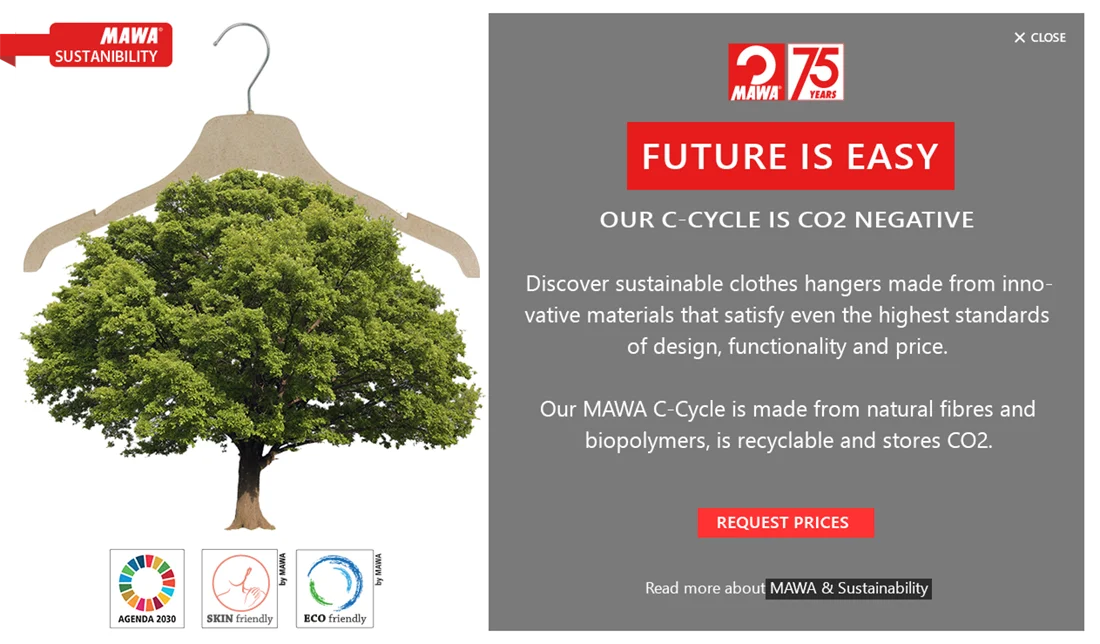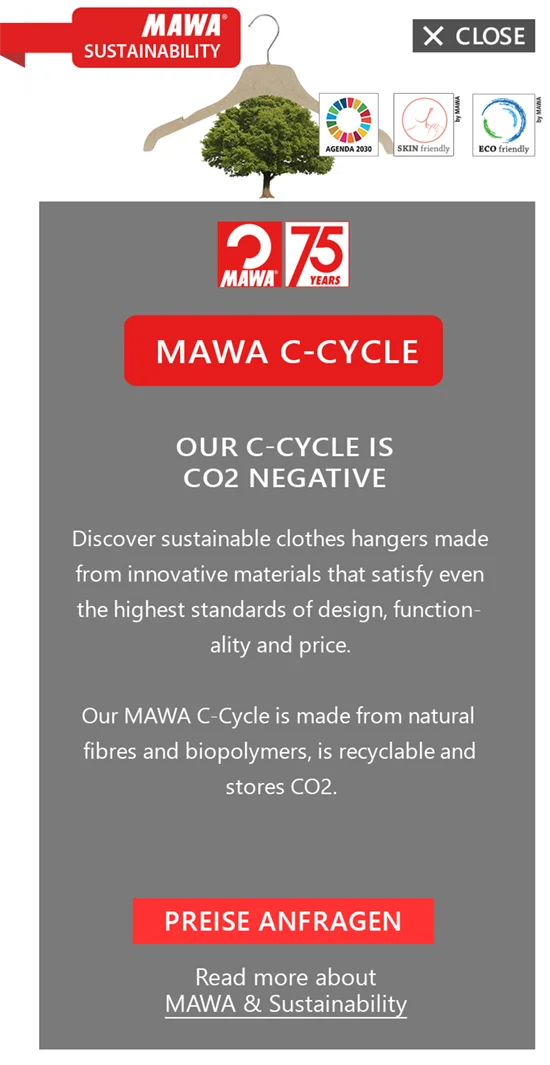Harmful substances in our clothes?
![[Translate to English:]](/fileadmin/user_upload/Bildschirmfoto_2022-07-25_um_16.16.39.png)
There are several stations where pollutants can enter clothing
Bright red jumpers, wrinkle-free shirts and blouses or water-repellent functional clothing: Many wardrobes contain colourful fashion pieces made from a wide variety of materials. However, in order for clothes to reach the market and then consumers in many different colours and with characteristics such as "non-iron" or "stain-resistant", chemical substances are often used in the production process.
Chemicals have become the norm in the fashion industry and for a long time only few thought about their impact. "By the time fashion pieces end up on the skin, they have usually come a long way and gone through a long manufacturing process. There are several stations where harmful substances can get into the clothing. This not only pollutes the environment, but can also have an impact on the health of those wearing the clothes," says Michaela Schenk, owner and managing director of MAWA GmbH, and adds: "In addition, it is important to consider that hangers on which the fashion subsequently hangs in the shop and at home can also be contaminated with harmful substances."
From dyes to phthalates - these are the pollutants in our clothes
Even in the cultivation of natural fibres such as cotton, pesticides are sometimes used. Formaldehydes are used in the manufacturing process for wrinkle-resistant or non-iron textiles, perfluorinated and polyfluorinated alkyl substances are used for water- or dirt-repellent coatings, and about two thirds of the dyes are so-called azo dyes, which are produced on the basis of petroleum. Some manufacturers also use other chemicals, for example insecticides to protect the clothes during transport or phthalates to soften plastic coatings. All these substances can cause allergies or irritation of the skin and respiratory tract in wearers of the clothing. Some chemicals are even suspected of being cancer-causing. In addition, chemicals pollute the environment. In many producing countries, there are no or only a few guidelines to prevent, for example, the pollutants from getting into the waste water and thus also into the surrounding waters. Sometimes there are also insufficient protective measures for the employees in the factories.
Awareness of harmful substances in clothing has increased
In the European Union, there are regulations such as the Hazardous Substances Regulation and the REACH Regulation (Registration, Evaluation, Authorisation and Restriction of Chemicals) that restrict the use of most chemicals. These then also apply to all garments imported into the European economic area. The majority of chemicals are also not absorbed by the skin. But current regulations do not cover all potential harmful substances. Some people also react more strongly to such substances than others, so that they have to deal with skin irritations and similar. Therefore, it is also recommended to wash clothes before wearing them for the first time, so that possible remains in the fabric are removed. "Awareness of the impact of chemicals on people and the environment has also increased significantly in recent years. When buying fashion items, more and more people are therefore also paying attention to textile seals such as Oeko-Tex or the bluesign certification, which provide orientation for sustainable production," says Michaela Schenk.

Also look out for chemical pollutants in clothes hangers
However, there are alternatives on the market for many of the chemicals used. Some manufacturers do not use these substances at all. However, if you only want to wear clothes without harmful substances, you must inform yourself in detail before buying. Even fashion made from organic materials does not guarantee that no harmful chemicals were used in the production process. "Consumers should also take care not to hang the fashion items they buy on hangers that may also have been manufactured using harmful substances. This is because substances that are hazardous to health must not come into contact with either the clothing or the skin. That is why our MAWA hangers do not contain any heavy metals, phthalate plasticisers, azo dyes, formaldehyde or lead or mercury," Schenk reports. The company therefore founded the "ECO friendly" and "SKIN friendly" initiatives a few years ago. With the "ECO friendly" seal, MAWA commits itself wholeheartedly to sustainable production. The "SKIN friendly" seal gives customers the promise that MAWA clothes hangers contain only tested materials and no SVHC substances, the abbreviation stands for Substances of very high concern.







